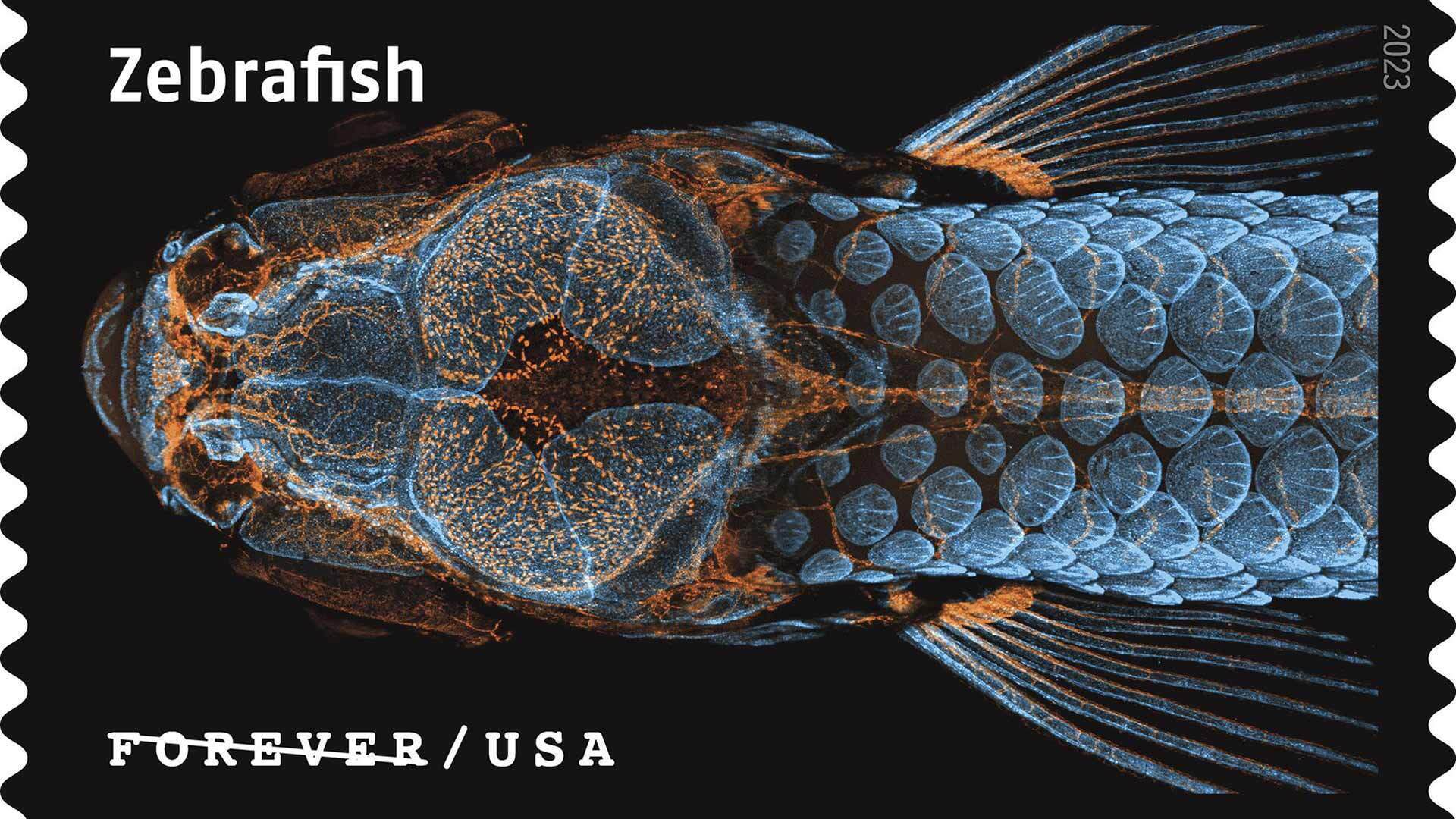- September 11, 2023
- By Kimbra Cutlip
Daniel Castranova M.S. ’03’s otherworldly microscope photograph of a juvenile zebrafish illuminates its subject like an artwork and a scientific study all at once. Now it gets to be both on letters and parcels criss-crossing the globe as one of 20 images featured in the U.S. Postal Service’s new Life Magnified Forever Stamp series.
Released in August, they reveal the beauty and magnificence of life at the smallest scale—from a detailed view of a beetle’s foot to mushroom gills and a knotted strand of human hair.
Castranova is an aquatic research specialist at the Eunice Kennedy Shriver National Institute of Child Health and Human Development, where he studies intricate biological systems in fish that are similar to ones in humans and can be used to advance medical science.
To capture his striking photo, Castranova used zebrafish that have been specially developed in the lab to express different fluorescent colors in different body tissues, snapping more than 350 images at varying depths through the animal’s body. Then he compiled them into a 3D model that resembles an iridescent glass ornament with shimmery blue scales and bones interlaced with a network of orange vein-like vessels.
“I mostly needed a series of close-ups for research on when and where lymphatic vessels form,” he said. “But I thought it would be nice to have an overview picture of the whole fish, and I knew the way the pectoral fins spread like wings would look cool.”
As beautiful as it is, the image also represents a revolutionary discovery: Those lacy orange vessels aren’t veins, but lymphatic vessels, which carry bodily fluids, immune cells, disease surveillance cells and waste products from organs and tissues. No one knew they existed in fish skulls until Castranova’s photographs revealed them.
In humans, they may play a role in diseases where immune dysfunction harms the brain, like multiple sclerosis, Alzheimer’s and brain cancer. The recognition that they also exist in zebrafish skulls opens up a new avenue for exploring potential causes and treatments for brain diseases.
Castranova’s photo was first published in a scientific paper in the journal Circulation Research, which featured the image on its cover. In 2020, it beat out thousands of others from around the world to win the top honor in the 46th annual Nikon Small World Photomicrography Competition. Castranova’s video of the first 22 hours of a zebrafish embryo’s development also won honorable mention that year.
After processing the images, he immediately realized it was a beautiful picture, but Castranova was surprised by its long-lived success. When the Postal Service first contacted him, he wasn’t sure it was a legitimate request, so he sent the email to his agency’s communications office for confirmation. Now that the stamp is in print, he jokes that his parents are funding the USPS with all their stamp purchases. And he’s received a card in the mail from his mother-in-law posted with his stamp.
That’s a pretty awesome feeling, he said. And proof that taking an extra second to add artistry to his science is worth the effort.
Topics
People